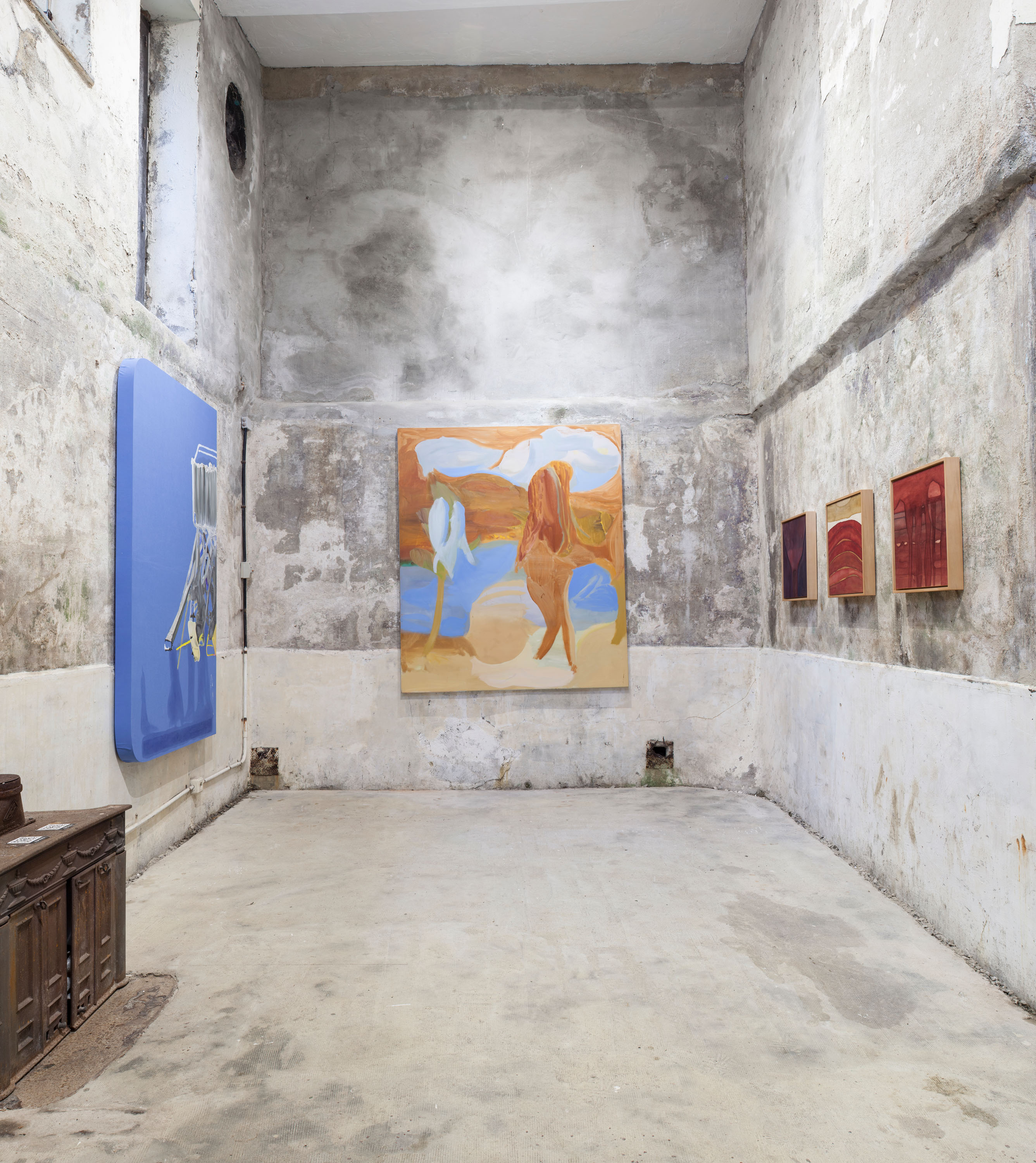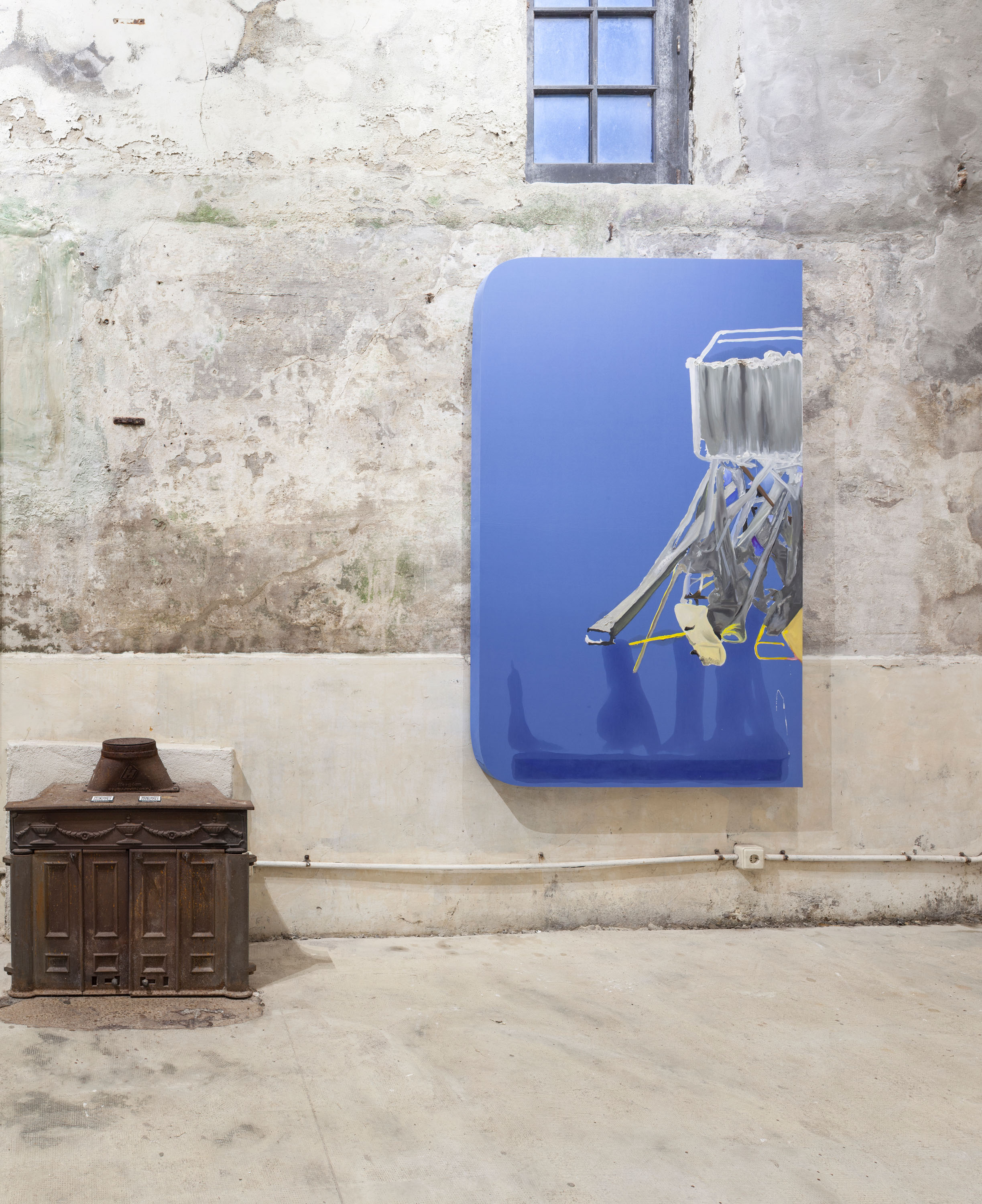ILLUSIVE PLACES II: THOMAS CHAPMAN, ALEJANDRO GARMENDIA, LOUIS JACQUOT, LUCY MULLICAN, MILKO PAVLOV
Paseo del Faro 33, Donostia-San Sebastian
September 21 – October 30, 2024

Villa Magdalena is pleased to announce Illusive Places II, a continuation of the group exhibition curated by Cy Schnabel at Pace gallery Seoul including Thomas Chapman, Alejandro Garmendia, Louis Jacquot, Lucy Mullican, and Milko Pavlov. This show examines a selection of atmospheric perspectives in painting that engage with distorted interpretations of outdoor scenes.
Illusive Places II: Thomas Chapman, Alejandro Garmendia, Louis Jacquot, Lucy Mullican, Milko Pavlov brings together works by artists who, in one way or another, share an interest in reinventing landscape painting. These five artists use landscape as a point of departure to create nuanced approaches to subject matter, form, and content.
Throughout this exhibition, natural settings turn into imaginary realms that suggest new perspectives of the physical world and life in general. An abstracted sense of space in the pictures on view gives way to unstable compositions that are charged with desire, fantasy, and sometimes loneliness. A range of psychological views carry their own resonances and connect through each artist’s interest in presenting a distinct irreality in their work. Utopias, nightmares, hallucinations, and fragmented memories all materialize in these illusive places.
Thomas Chapman
After experimenting with shaped canvases for more than 20 years, Thomas Chapman (b. 1975, San Diego, California) has returned to figurative painting, developing a style that is heavily influenced by his drawings of everyday life. The work on view in Illusive Places II is a voyeuristic study of leisurely moments. Layered imagery resulting in a dense atmospheric haze makes the figures who populate this invented scene barely perceptible. Throughout his oeuvre, found fabrics, collage, stolen typographies, markers, paint, pencil markings, glue, and many other elements comprise the surfaces of his paintings. The unorthodox shapes of some of Chapman’s early canvases are inspired by a variety of subjects: astronomy, mythology, and ancient history. Taking an unconventional approach to painting, Chapman makes use of supports and many layers of sometimes conflicting visual information as common features in his diverse practice.
Alejandro Garmendia
Alejandro Garmendia (San Sebastián, 1959 - 2017) possessed a subversive attitude and an ingenious approach to the aesthetic structure and formal aspects of landscape and architecture. He commandeered them to a point of departure where a plethora of images manifest themselves in a variety of ways, documenting the non-existent and creating the physically impossible. Phantasmagorical objects shift, transforming what we are looking at into a world where scale and plane are mixed together until gravity ceases to exist. Scenes that do not necessarily conform to one particular style, ultimately present a distanced metaphysical vision of an emotional character filled with solitude and melancholy; that brings us into a new painted irreality.
Louis Jacquot
Louis Jacquot’s (b. 1994, Paris, France) practice hinges on relationships between objects and pictures. The artist’s sculptural paintings combine minimalist gestures with iconographic elements. In Jacquot’s hands, the intimate subject transcends the image to encompass the entire painting. Both the material— bedding—and the shape of the canvases -like that of a pocket notebook- speak to direct contact with the body. In the past, during his BFA at the École des Beaux-Arts in Paris, the artist maintained a workspace more akin to a woodworker’s shop than a painter’s studio. He avoided his “own” mark-making in favor of objects that were practically devoid of any graphic elements. In the few cases where pigments are applied, Jacquot chooses images that could belong to anyone. His previous works show an impersonal vocabulary of generic found symbols appropriated from the street—any universal emblems became subjects of interest for him.
Lucy Mullican
Lucy Mullican’s (b. 1994, New York) paintings use the horizon line as a compositional device to create a tension between gravity and the human spirit, which, in contrast to the former, is always in a state of ascension. We can trace maps of ethereal worlds in her works, which are ultimately self-portraits. The artist has experienced a spiritual transformation that is evident in her departure from painting waterfalls, islands, and rivers in favor of a more contemplative, inward consideration of the mind and the organs. Exterior environments blend with bodily forms, creating anthropomorphic landscapes. Her delicate paintings on wood consist of many layers of mineral pigments and pulsating lines, which create translucent surfaces. What the artist refers to as “pockets” or “holes” within her compositions function like portals, allowing the viewer to travel back and forth between pictures. The natural pigments of the watercolor and the wood receivers become one, reflecting the artist’s innate ability to understand her medium and employ technical fluidity. Mullican’s penetrating vision goes beyond the surface to reveal what we cannot see and bring us closer to what we feel. Transient moments flooded with light embody the artist’s representation of spirit.
Milko Pavlov
Milko Pavlov’s (b. 1956, Aytos, Bulgaria) paintings depict an imaginary natural world where rock formations, trees, water, and other organic matter have been rendered unrecognizable. The artist’s pictorial blend of naturalistic representation and abstraction creates a vast scale within the picture plane that is an everchanging way of seeing. In Pavlov’s oeuvre, form, surface, and composition develop in response to paint itself as a subject. His black and white frottage works—a technique he now applies to canvas—are continuations of the graphic work he was making in Bulgaria in the early 1990s. The artist’s colorful palette derives from his early exposure to 18th and 19th century Bulgarian Icon painters, which shifted his attention towards religious works of art instead of assimilating formal ideas related to the socialist realist aesthetic dominant in the country in the 1970s. The way the artist organizes space in his paintings—in other words, the composition—loosely resembles mountains or landscapes, a subconscious gesture which perhaps illustrates the mountainous nature of his native country.
INSTALLATION VIEWS
Exhibition views: Illusive Places II: Thomas Chapman, Alejandro Garmendia, Louis Jacquot, Lucy Mullican, Milko Pavlov, Villa Magdalena, Donostia-San Sebastián. Photography by Idoia Unzurrunzaga.
FEATURED WORKS


Milko Pavlov
2104/97-2035
2020
Oil on linen
200 x 170 cm (79 x 67 inches)
© Milko Pavlov;
Courtesy the artist and Villa Magdalena
Thomas Chapman
Love your New Future (New Cat Regatta)
2021
Acrylic, spray, marker and graphite on found fabric
178 x 189 cm (70 x 74 inches)
© Thomas Chapman;
Courtesy the artist and Villa Magdalena

Alejandro Garmendia
Untitled
2015
Oil on linen
162 x 130 cm (64 x 51 inches)
© Alejandro Garmendia;
Courtesy the artist and Villa Magdalena

Louis Jacquot
Fran
2024
Oil and acrylic on cotton
208 x 128 cm (81 x 50 inches)
© Louis Jacquot;
Courtesy the artist and Villa Magdalena


Lucy Mullican
Untitled
2022
Watercolor on board
50 x 50 cm (20 x 20 inches)
© Lucy Mullican;
Courtesy the artist and Villa Magdalena
Lucy Mullican
Untitled
2022
Watercolor on board
50 x 50 cm (20 x 20 inches)
© Lucy Mullican;
Courtesy the artist and Villa Magdalena

Lucy Mullican
Vessel
2022
Watercolor on board
50 x 50 cm (20 x 20 inches)
© Lucy Mullican;
Courtesy the artist and Villa Magdalena








